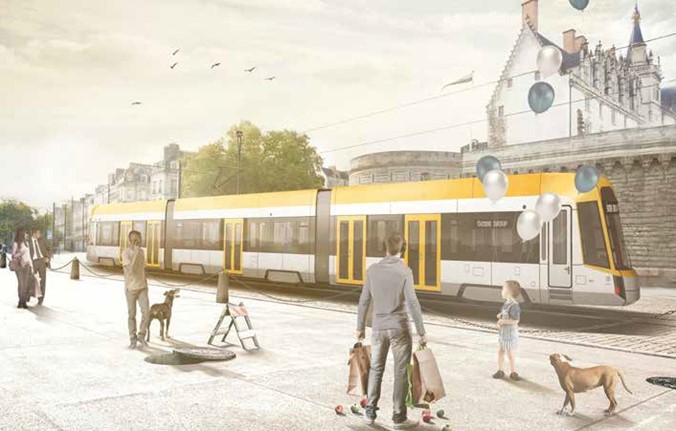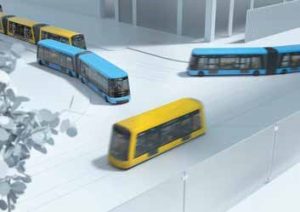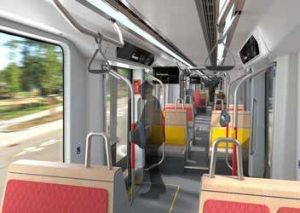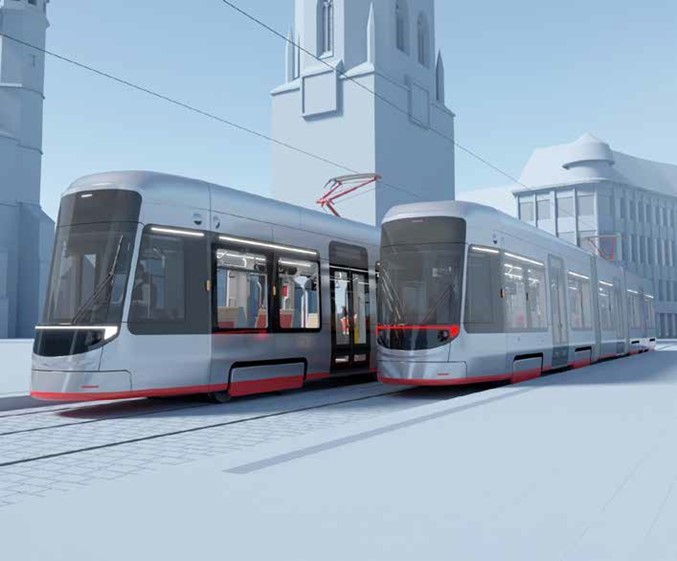Yes, it can. Just meet our design.
The character of a city is shaped by its public transportation system, which has an impact on both the impression tourists have of the city and the quality of life for local residents.
Various factors contribute to the design of vehicles, including technology, materials, safety considerations, and even climatic conditions or street width within the city. Additionally, numerous small details in the interiors play a role in enhancing passenger comfort, often without us being consciously aware of them.
Škoda Group vehicles are known for their high-quality design, and the group take pride in its ability to customize it to suit specific cities or customers in all of its projects. Follow along to learn more about the work of Škoda Group designers.
Current trends in vehicle design
It is typical for means of transport that the development of new vehicles, their introduction to the market and their subsequent life spans a period of decades. Given the long lifetime, it is also desirable that proposals for design and styling are not subject to short-term trend.
Škoda Group designs its vehicles in line with the latest trends. Let’s examine some of the prominent trends that have influenced the production of trams and other vehicles presently operating on city streets or being newly introduced into service.
Upon initial inspection, the dimensions of windshields have undergone changes, including the materials used. The objective is to provide drivers with an unobstructed view while ensuring that the consequences of a collision with a pedestrian are not fatal. Statistics on traffic accidents validate the value of these modifications.
Safety-related changes also extend to the interior, which now features a more open layout and often incorporates camera surveillance. Less visible factors encompass the design of handrails and other interior elements, including the selection of materials. Passenger safety in unforeseen situations is receiving more attention than ever before.
While the pursuit of practicality and ease of maintenance has always been crucial, in recent years, comfort and the overall driving experience have gained increasing importance. After all, the aim is to encourage individuals to switch from cars to more sustainable public transport. The most noteworthy change in recent times has been the transition to low-floor vehicle design, significantly enhancing the accessibility of public transport for passengers. The low floor also impacts the overall interior arrangement.
The materials used for seats have undergone significant evolution. Present-day trams feature plastic, wooden, and upholstered seats, often in combination. A design innovation is the offset double seat, deviating from the traditional side-by-side arrangement by a few centimetres. This seemingly minor feature enhances passenger comfort by avoiding tightness in the broadest part of the body, namely the shoulders.
Noise is another comfort-related aspect under scrutiny. Numerous sub-changes, not immediately noticeable, have been implemented in the chassis or engine units. Consequently, modern trams are considerably quieter, both internally and externally, thanks to ingenious technical and design solutions.
All contemporary trams are equipped with electronic information panels, an array of intelligent sensors, and other electronic features, such as sockets or chargers. Twenty years ago, none of these existed – car doors opened mechanically, and the sole information system was a plastic sign displaying the names of the stops on the line. Simultaneously, numerous tram systems include passenger-unseen components, such as driving assistants that provide drivers with an additional set of eyes.
A unique approach to design in Škoda Group
Differentiating itself from other manufacturers of public transport vehicles, Škoda Group employs a unique design approach. With a rich heritage, Škoda stands as one of the most established rolling stock manufacturers, exerting significant influence on public transport design not only in Europe but also globally. These vehicles embody a remarkable fusion of contemporary design and cutting- edge technologies, ensuring both safety and reliability.
Leveraging their expertise, Škoda Group produce products capable of meeting the demands of modern and dynamic urban environments, synonymous with exceptional quality.
In-house design excellence
While collaborating with external design studios and universities focused on design, Škoda Group maintains a strong in-house design team, ensuring consistent design direction. In-house team comprises six industrial designers, each specializing in specific design domains. This specialization empowers the group to create sophisticated and innovative solutions that meet the exacting requirements of its customers. Working alongside larger teams of designers, engineers, and developers, the design team’s vision takes tangible form, blending unique perspectives and expertise for successful outcomes.
Tailored designs for custom projects
Vehicle acquisitions often come with significant costs, prompting manufacturers to adopt one-size-fits-all solutions that sacrifice individual client requirements. In contrast, Škoda vehicles are distinguished by their ability to seamlessly integrate into the overall cityscape. Designers meticulously analyse the city’s architecture and infrastructure, ensuring that Škoda vehicles not only function optimally but also align with the broader urban planning concept. From utilizing city-specific colour schemes to reflecting the built environment in their shape, designs harmonize with the city’s aesthetic and functional needs.
Testing designs in real-world scenarios
At Škoda Group, a key priority lies in crafting vehicle designs that are both visually appealing and practical in everyday use. To achieve this, the teams of designers and engineers develop life-size models on which potential passengers, drivers, attendants, and other stakeholders can test the proposed solutions in realistic conditions. This invaluable feedback enables Škoda Group to refine designs, striving for maximum user-friendliness and efficiency. The most recent effort involved testing a sleeper cabin mock-up for Finland’s state operator VR, ensuring the optimal design for new night trains.
Unifying Design Elements
Škoda designers concentrate on maintaining a cohesive visual style, characterized by clean lines, well-defined curves, and a confident expression throughout the rolling stock. A distinguishing feature of Škoda vehicles is the seamlessly integrated black mask that connects to the windscreen. This element elegantly houses the headlights and logo, providing a visually striking highlight. Despite variations in size, shape, and underlying technology among different vehicle types, this design element serves as a unifying visual touchpoint.
A Glimpse into the Future
With the arrival of new technology, fresh opportunities are emerging in the design and development of vehicles for public transport. Factors that are not yet apparent to today’s passengers will increasingly shape the overall design and performance of vehicles.
Cutting-edge technologies are already exerting a significant influence on the design of public transport vehicles. Utilizing 3D printers offers improved insight into the suitability of proposed design solutions. Virtual reality enables the verification of design proposals at a 1:1 scale. Undoubtedly, these technologies will progressively become integral to the design process, for instance, facilitating communication with clients who will be able to navigate through their vehicle before its manufacturing. The shift towards autonomous vehicles is commonly associated with cars, but the same trend is also impacting public transport. In a few years, front cabs may become obsolete, and trams and trains will be operated in an entirely different manner.
Design of public transport vehicles is a vital aspect that leaves a lasting impact on cities, residents, and visitors. Škoda Group’s unique approach, with its emphasis on high- quality design tailored to specific cities and customers, sets a benchmark in the industry. By embracing current trends, leveraging advanced technologies, and looking toward the future, Škoda Group continues to shape the landscape of public transport design, enhancing the overall experience for passengers while contributing to the character and charm of cities worldwide.
Share on:







